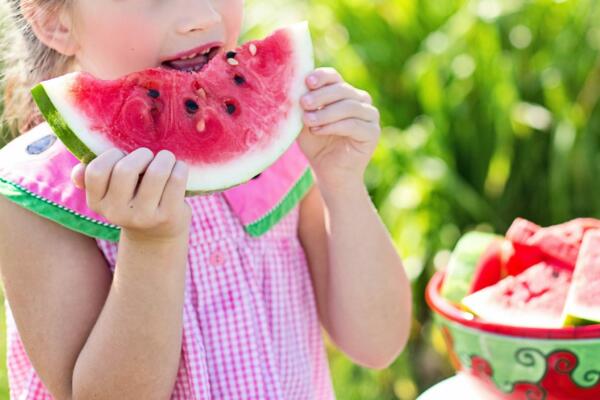It’s a struggle as old as time: getting your kids to eat healthy food. It can feel like a never-ending battle between you and pizza/sweets/crisps. That’s OK. It happens to us all. Here are some of the best ways we know to help make sure that your child eats healthy food without the tantrums. For many, eating healthy sounds boring and uninspiring. We associate healthy eating with salads, low fat\low calorie ready meals, bars and other packaged foods. It doesn’t have to be like this.
FREE REWARD CHART & CHEAT SHEET!
We’ve created a reward chart and cheat sheet to help you keep your kids healthy without the hassle. No sign up, no gimmicks, just a straight download.
Contents: PDF x2
- Avoid being the food police. If you have ever felt resentful for being forced to do something you don’t like then you will understand. Trying to be the food police just causes conflict, and thus the tantrums. Stay calm and let them eat, they aren’t going to allow themselves to starve. Firm but fair would be the best description. A lot of times refusal is just to create attention, if you react more to the positive by dishing out praise then they are going to be much more receptive to eating healthy than not. Make sure that your house is stocked full of nice healthy wholesome options, and let them choose from those options, that way this limits their choice. This leads us on to.
- Allow kids to make mistakes — and learn from them. This ties into the first point. We all learn lessons from our mistakes and teaching your kids this way will help them no end. For example if they eat so much chocolate they feel sick, you can teach them the cause and effect of that. Simple steps like this can steer them towards making healthier choices on their own. It also works in the principle of indulgence. If you have ever cheated on a diet, or had a guilty pleasure of a midnight snack, then you know what I am talking about. Reserve the unhealthier choices for special occasions and they will feel like they have a better sense of balance with their food.
- Let them choose their snacks. This requires a bit of forethought and planning but it is worth it. Having a shelf or cupboard of pre-approved healthy snacks within easy reach of the kids allows them to raid their favourites while you are safe in the knowledge that they’re healthy. You also don’t have to act as gatekeeper now and therefore they saves you time in the long run too.

- Introduce change gradually. As soon as kids see food they have never tried before, they are likely to avoid it at all costs. Doing that for every meal will cause tantrums. Introduce one new meal a week and slowly start replacing the seriously unhealthy for the healthy. This will also allow you to experiment with new ideas, recipes, ingredients and more. Don’t be afraid to add healthy additions to their favourites. Vary their food so they get plenty of vitamins and minerals. And if you give them something new and they don’t like it, don’t cause a fuss, just try later. It can take quite a few failed attempts before they try something and realise they like it. Also try making your own “healthy junk food” using English muffins or filo pastry for pizza bases. For dessert it’s easy to make fresh fruit ice lollies from fruit juice and pureed fruits.
- Trick your kids! Smoothies can be your friend. Find some amazing smoothie recipes and your kids will love them. They will get all the healthy nutrients and enjoy having a drink instead of food. ‘Nuff Said!
- Cook with them. Cooking with your kids is not only an amazing way to keep them busy for an afternoon but you can also make healthy versions of their favourties, and what’s best of all, they are more likely to eat it. This will not only instil a sense of pride and accomplishment with them but also show them how easy it is to be healthy. This eve goes for at the dinner table with meals such as tacos where they can add the flavours they want from the array of healthy choices before them.
- Turn it into a game. Kids love playing games, either outside with friends or indoors on an Xbox. Turning each meal into something they can work towards not only gets them to comply but they can also see the reward from what they have done. For one parent in the office, she does this with her son’s game time. If he finishes all of his vegetables he levels up and is allowed extra time on his game, if he doesn’t he gets nothing. A simple change in your wording can make the difference between an empty plate or a tantrum. Also having a reward chart for hitting their 5 a day help ensure they can see their progress and act as proof that they deserve their treat!

- Educate your kids about food. If children know about food, if they learn about their favourites they are likely to remember it. They are then more likely to make healthier choices because they know about what they are eating. Some kids can spot a hidden mushroom a mile off, so sometimes the best thing is to be upfront about fruit and vegetables, tell them where they come from and why they are so good for you. Giving them facts could make them more interested about what they are eating. I used to offer a starter – a little teacup or saucer of something new that they could try that would be in addition to their main meal.
- Don’t expect it to be easy. Getting kids to eat well takes determination, but they won’t starve if you deny them a biscuit. If your child is growing, has energy and sleeps (as much as they ever have) then they’re getting enough nutrition.
- Stick to the house rules. Agree with your partner about what’s acceptable, so your child doesn’t receive mixed messages about eating habits. Make it healthy and on time. Stick to a routine. Whether or not kids realise it having a set routine allows them to know what to expect and gets them ready for their next meal.
- No TV or tech at the table. This may sound obvious however, the less distractions they have the more likely they are to concentrate on actually eating their food. Keep it calm and peaceful (as much as possible) and you should see great results. Engage in conversation with them and get them talking to you. We know this can be like pulling teeth at times but they will not only be much more engaged at meal times but also develop better speaking skills.
- Limit the portions. Huge portions of food are overwhelming, so serve up small ones – they can always have more. A serving counts as a handful , for a child it would be a child-sized one. Your child’s stomach is only the size of their fist, so it doesn’t take much to fill them up. It’s better that they have two smaller sizes than ½ a large size.
- Children are sponges, absorbing the environment around them. They primarily learn from watching others and as parents they will have the closest eye on you. Eat with them every breakfast and dinner time and set the example for them to follow. Even if you don’t like the particular fruit or vegetable, just by trying it and showing that you have can encourage them to find new foods to enjoy.

We’ve created a reward chart and cheat sheet to help you keep your kids healthy without the hassle. No sign up, no gimmicks, just a straight download.
FREE REWARD CHART & CHEAT SHEET!
We’ve created a reward chart and cheat sheet to help you keep your kids healthy without the hassle. No sign up, no gimmicks, just a straight download.
Contents: PDF x2